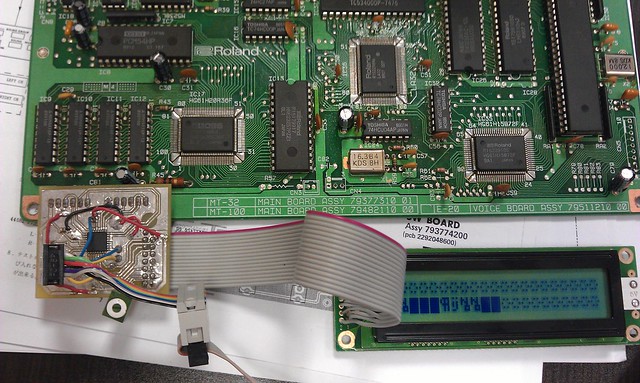It was a set of two board. The second board is a E-20 control logic (keyboard controller, sequencer, arranger). The man who sold me it found these boards in a scrap and does not have any other parts or cables

I will try to identify power, MIDI IN and analog output and run MT-32 PCB. Since MIDI has no Opto-converter, the levels should be true TTL and I'm planning to use generic soundcard with Joystic/MIDI DB-15 connector which provides MIDI with TTL levels. The power should be +5V
A little doubt is a controller PROM. The original MT-32 has a display and some knobs on the face. Working inside E-20 this boars no need any controls and works "headless".
Unfortunately, I can't find a good photo of the "new" MT-32 PCB. The "old" PCB may be found there:
http://queststudios.com/smf/index.php?topic=1414.0
Can anyone provide a good photo of the "new/headphone" PCB of the MT-32 ?


